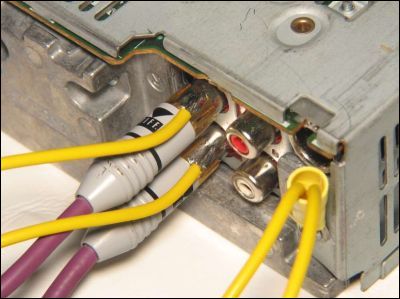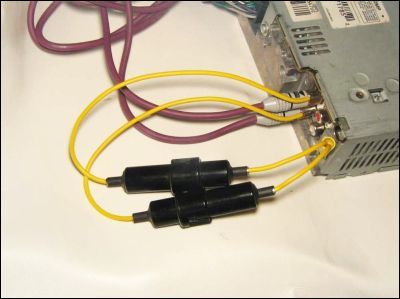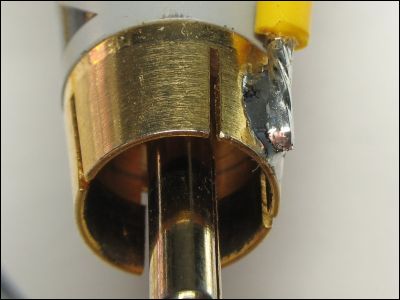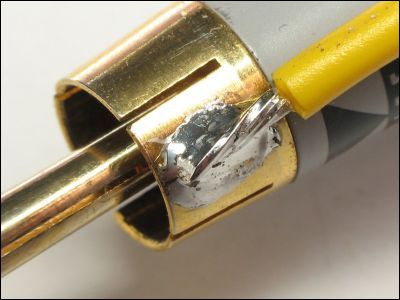This page explains how to check for open RCA shield grounds, the most common problem for head units. If your head unit doesn't have open shields, the amp may be defective. The following links help to troubleshoot amplifier problems.
The shield of the RCA output of the head unit should be directly connected to the case of the head unit. To check the shield ground, use an ohm meter and make sure that there is continuity between the case of the HU and the RCA shield. Make sure that the RCA cables are
disconnected from the RCA jacks on the HU. There should be less than 1 ohm
† between the RCA output shields (the shiny outside part of the connector) and the case of the HU. If the resistance is more than a few ohms, you may want to have a technician check it out. If you find that the shield connection is defective, it was likely damaged when a 12 volt power source was allowed to come in contact with the shield at some point in the system.
 †
†If you're checking this from the amplifier-end of the RCA jacks instead of at the head unit, you will be measuring from the RCA shields to a
known good ground near the amplifier. Doing it this way, you may read slightly more resistance (3, 4, 5 ohms?) but the resistance should be very low.
It doesn't matter if the head unit is on or off during this test but I'd suggest doing this with the ignition and head unit off.
The temporary repair shown on this page safely reconnects the shield to the chassis of the head unit. It involves connecting the shields (externally) to the chassis ground through one or two fuses. The fuses should be no larger than 3 amps. A 1 amp fuse should be sufficient. If the 3 amp fuse blows, there is a serious problem. You can use a single wire soldered across both shields and a single fuse.
The fuses are necessary to prevent a fire hazard. If you use an unfused wire and the owner of the vehicle allows the shields to short to the power wire again, the unfused jumper will violently burn open (lots of smoke and flames). If the problem is an amplifier with an intermittently shorted transformer, the fuses will likely prevent the power supply transistors from being destroyed.
If you decide to open the head unit and repair the ground internally, do not use a large wire as a jumper. If the head unit uses a fuse between the shield and chassis ground, you must replace the fuse with the same type/rating. If the head unit simply allows a trace to open when voltage is applied to the shields, jump the open trace with a single strand of very small wire. I often use a 1 ohm 1/4 watt resistor. The 1 ohm resistor will generally open with no mess (no smoke/flames). To be safe, you should use a flameproof resistor.
Below, you can see the circuit board of a head unit. The area between the pads (marked FUSE) is designed to be the weakest point in the ground circuit. This will cause it to open before any other point. When it opens, you will have to install a jumper between the pads. The jumper can be a small wire, a resistor or a fuse (a fuse would be the best option).
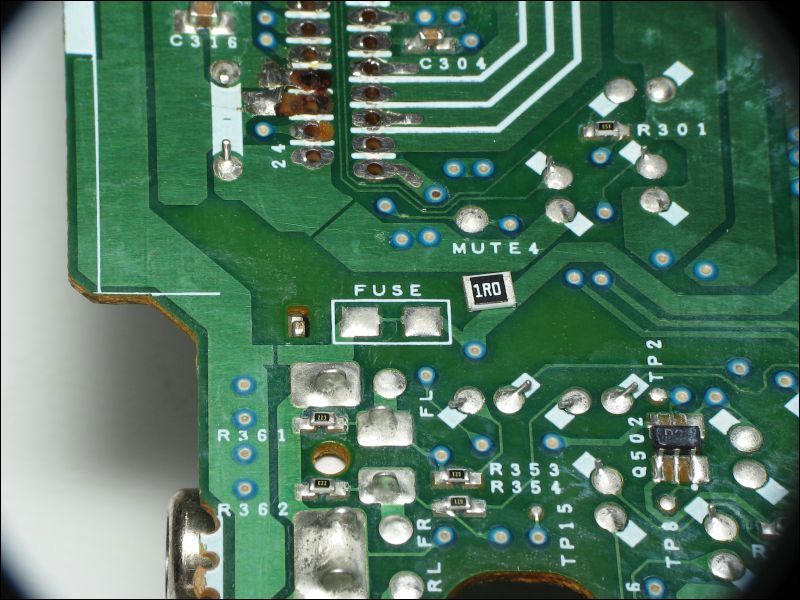
This is a closer view. You can see a 1206 size 1 ohm resistor.
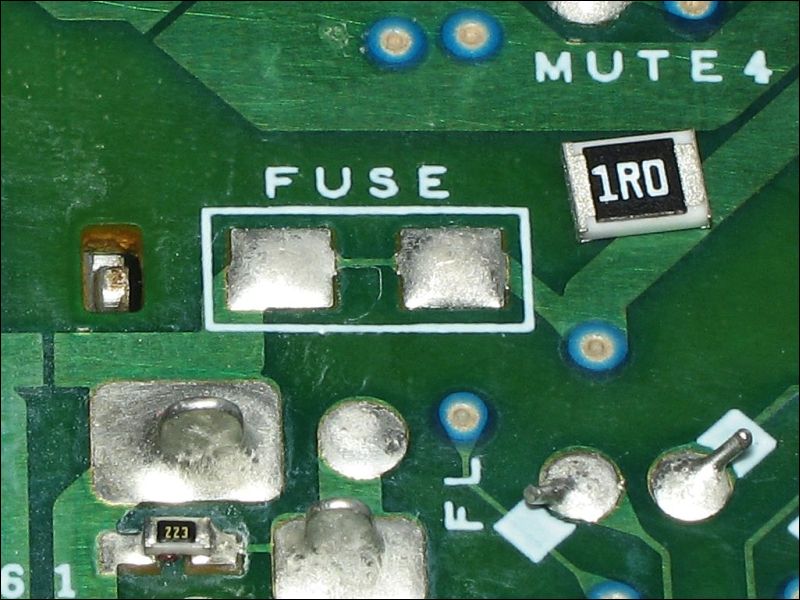
Click
HERE to open the datasheet for suitable replacement fuses. If the head unit originally had an actual fuse on the board (not just a trace between the pads), it would have had a letter on it. The datasheet will show the value and part number of the original fuse. Many of the Pioneer head units have a 'P' fuse.



